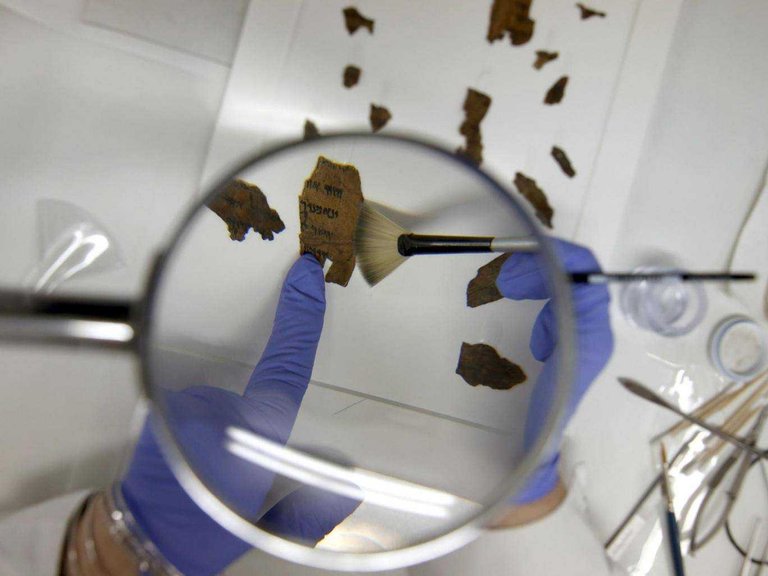Scientists read one of the previously unpublished Dead Sea Scrolls, collecting a manuscript from 62 scattered fragments of parchment. According to the researchers, the manuscript contains a 364-day calendar.
Researchers from Haifa University said that they were able to read the encrypted text of one of the Qumran manuscripts containing a 364-day calendar with religious holidays. The manuscript was severely damaged, it was collected from 62 small fragments. The scientists found that two scribes worked on the text: one corrected a number of errors of the other.

Qumran manuscripts (scrolls of the Dead Sea) - a series of manuscripts found in the caves of the Judean Desert. They are made of different materials: papyrus, goat or sheep leather parchment or a copper sheet on which symbols are squeezed out. Most of the manuscripts were created in the period from 250 BC. e. to 68 year n. e. About 30% of the scrolls contain biblical texts, among other manuscripts there are materials written by members of the closed men's Jewish community of the Essenes.

A significant part of the famous Qumran scrolls is read and published. According to the authors of the new work, the studied scroll 4Q324d remained one of the last unpublished manuscripts. He managed to approximately date, the manuscript was created not earlier than IV century BC. e. The leather scroll was poorly preserved, it was collected from 62 fragments, many of them did not exceed the size of a square with a side of 1.5 cm. The material darkened, but the letters written in coal ink could be disassembled without the help of infrared photography.
The scroll is written using a cipher, known as Cryptic A, in which every letter is replaced by a corresponding sign.
Thanks for the information. It is very interesting and amazing the things they can do now deciphering the past.